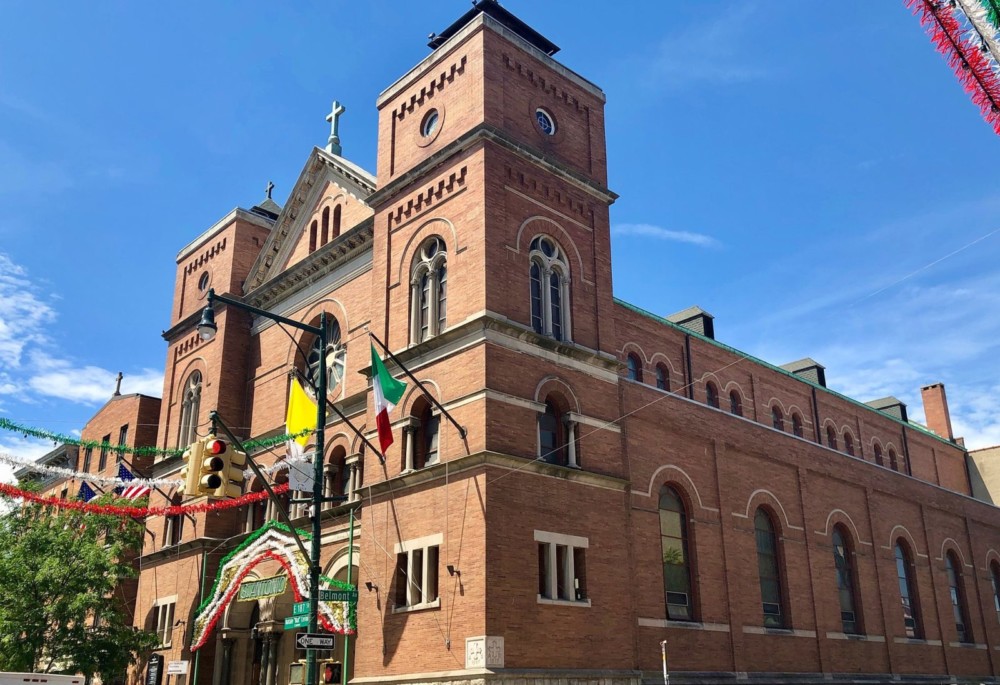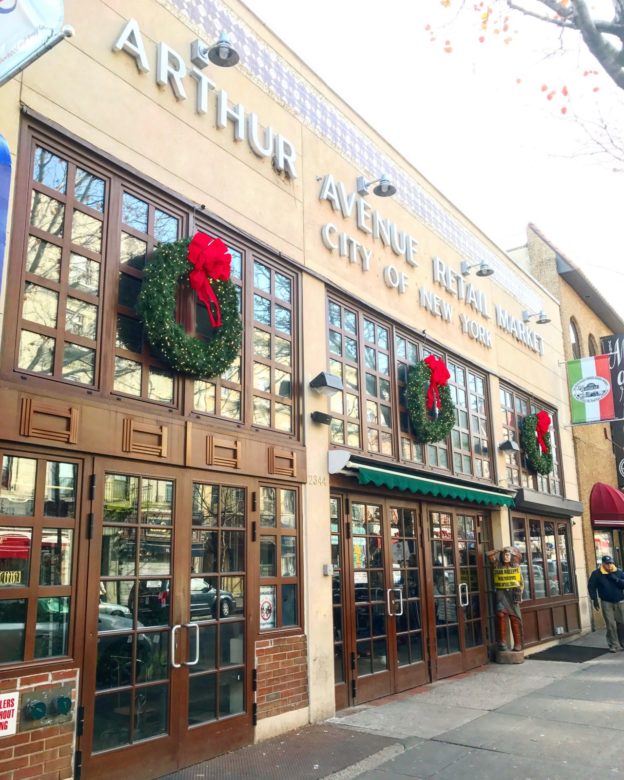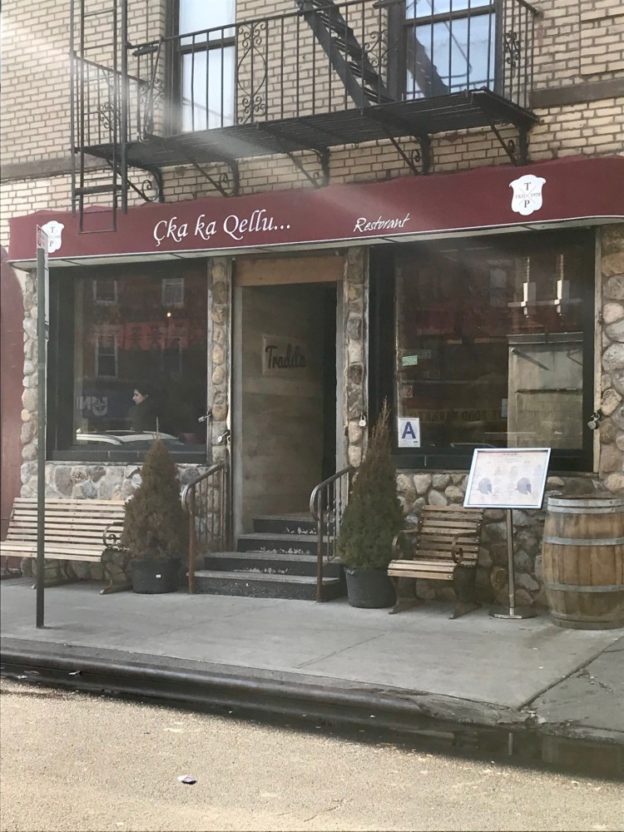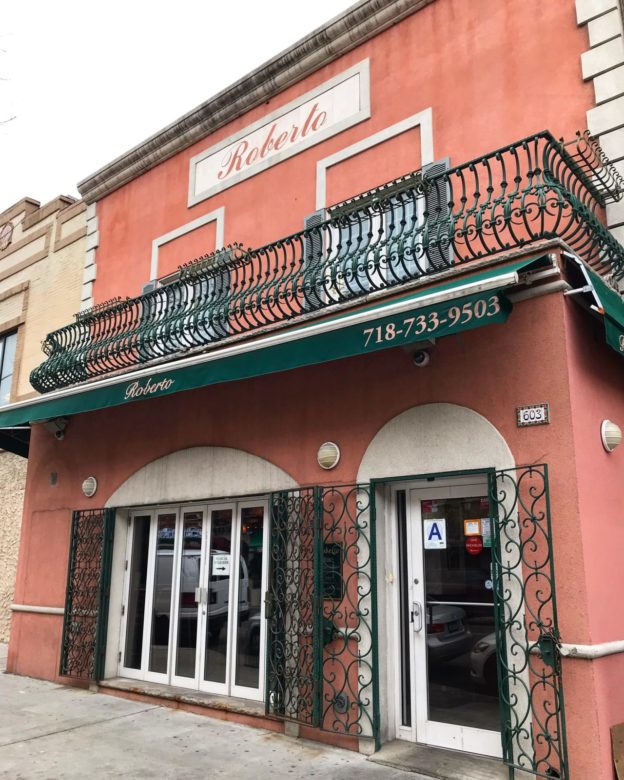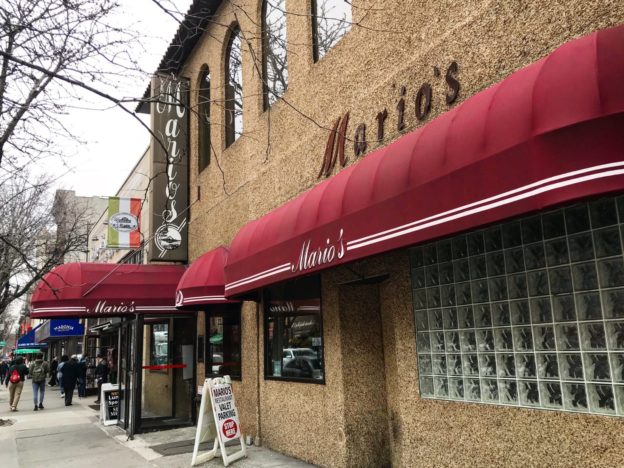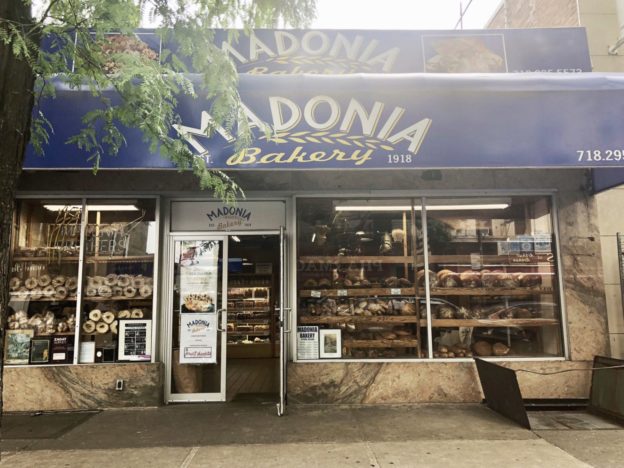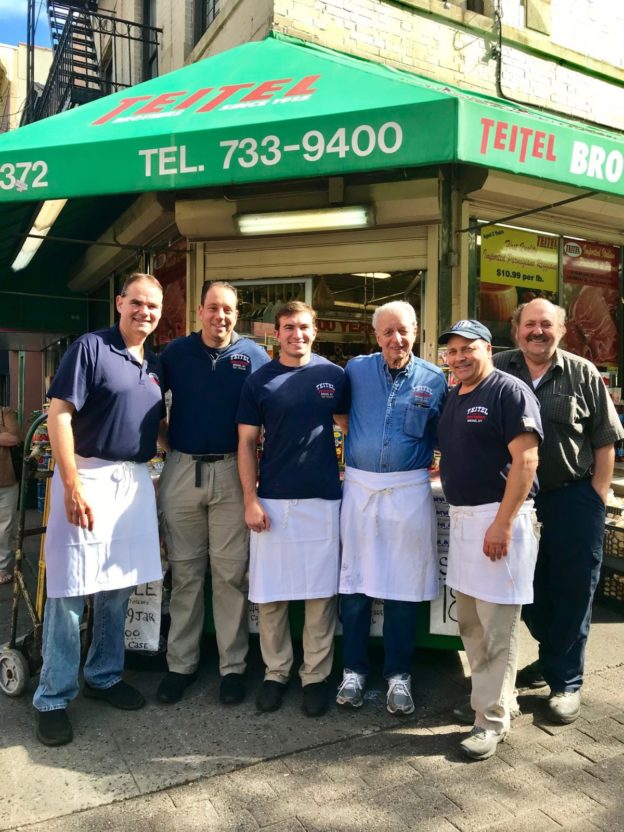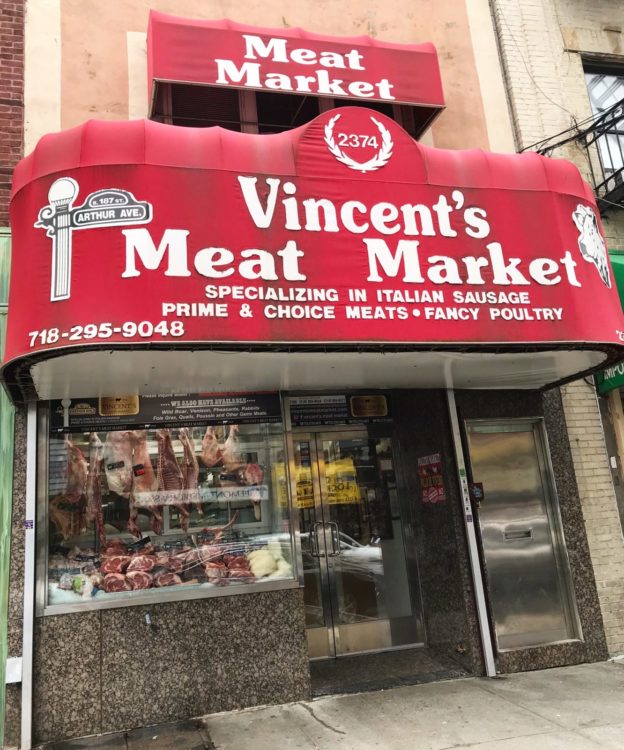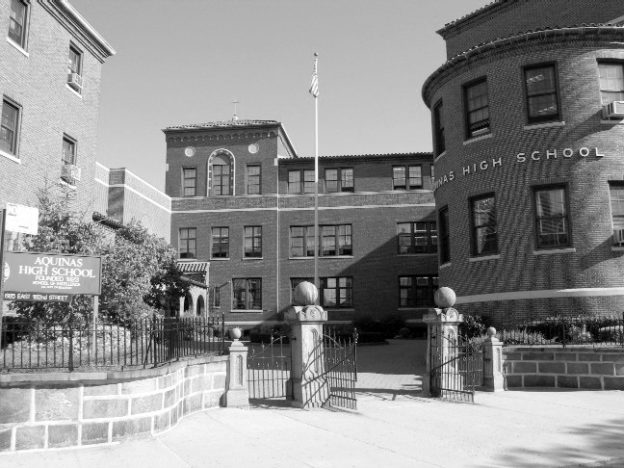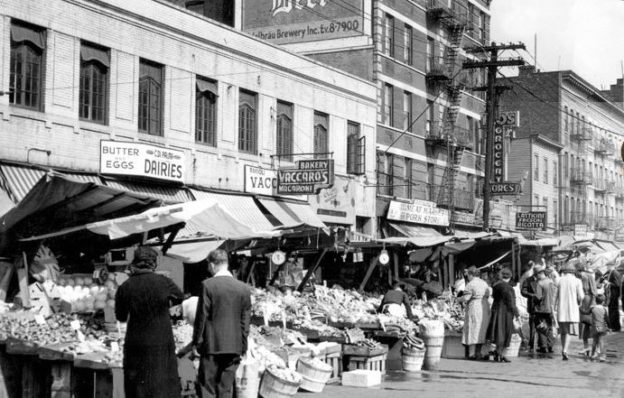27 East 187th Street
1915-17
Anthony F.A. Schmitt
This beautifully preserved Romanesque Revival church, built for a parish founded in 1906, is the spiritual heart of the Belmont community. The twin-towered church has a triple portal, a great wheel window, and superb brickwork. Italian Catholic congregations typically built their churches in either Romanesque or classical styles, as opposed to Gothic, which they associated with Irish churches where Italian immigrants often found a frosty welcome.
The architect of Our Lady of Mount Carmel, Anthony F.A. Schmitt, was a Roman Catholic architect with such credits as Holy Redeemer College (1934) in Washington, D.C., the Church of St. Pius V (1906-07) in Mott Haven, and Immaculate Conception School (1901) on Melrose Avenue and 151st Street.
The name “Our Lady of Mount Carmel”–shared by well-known churches in East Harlem and in Williamsburg, Brooklyn, as well as by the great shrine in Rosebank, Staten Island– refers to the 13th-century appearance of the Blessed Virgin Mary to St. Simon Stock in Cambridge, England. She bestowed upon him the scapular (a devotional artifact in the form of a cloth pendant) of Our Lady of Mount Carmel. In the Old Testament, Elijah lived in a grotto in Mount Carmel in present-day Israel. In the 12th century, the Carmelite Order was founded there.
This block of 187th Street is one of the finest in Belmont. The sidewalks are wide on both sides of the street, the tenement buildings with stores in their bases are beautifully scaled to the street, there are plenty of street trees, and the church lends its special excitement. When one imagines a young Dion DiMucci singing a cappella on the corner near the church, a whole slice of New York’s rich ethnic past comes vibrantly to mind.
Photo by Hugo L. Gonzalez.
